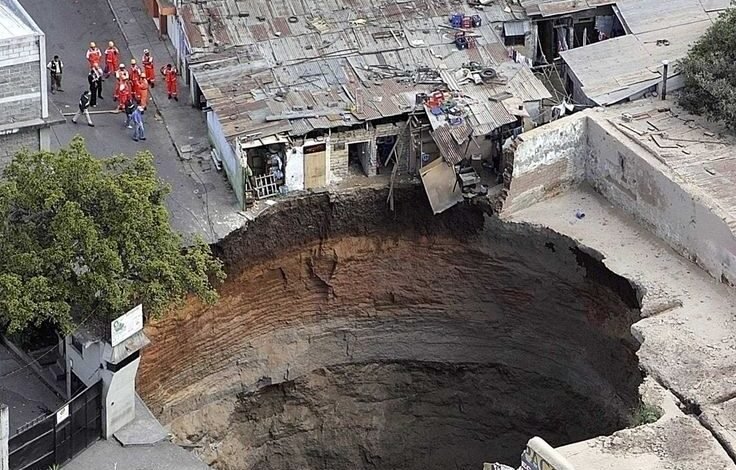
Sinkhole damage claims can be a complex and daunting aspect of property ownership, especially in regions prone to geological instability. As such, comprehending the intricacies of sinkhole damage claims is crucial for homeowners, insurance professionals, and anyone involved in property management. In this extensive guide, we delve into the fundamentals of sinkhole damage claims, exploring what they entail, how they are processed, and essential considerations for those navigating this often challenging terrain.
Introduction to Sinkhole Damage Claims
Sinkhole damage claims refer to the legal and financial processes involved in seeking compensation for damage caused by sinkholes on residential or commercial properties. These claims typically arise in regions characterized by karst landscapes, where the dissolution of soluble bedrock such as limestone creates underground voids that can lead to the collapse of the surface layer, forming sinkholes.
Understanding Sinkholes: Nature’s Unpredictable Phenomenon
Before delving into the intricacies of sinkhole damage claims, it’s essential to grasp the nature of sinkholes themselves. Sinkholes are geological depressions that form when underground caverns or channels collapse, resulting in sudden and often catastrophic land subsidence. They can vary in size from small disruptions to massive chasms, posing significant risks to structures and infrastructure in affected areas.
The Anatomy of Sinkhole Damage
Sinkhole damage manifests in various forms, ranging from subtle signs of subsurface instability to dramatic structural collapse. Common indicators of sinkhole damage include:
-
Cracks in Walls and Foundations: Visible cracks in walls, floors, or foundations may indicate shifting ground beneath the structure.
-
Sagging or Uneven Floors: Sinkhole activity can cause floors to slope or become uneven as the underlying soil shifts.
-
Sticking Doors and Windows: Changes in the alignment of doors and windows may occur due to the settlement of the building’s foundation.
-
Depressions or Holes in the Ground: The emergence of sudden depressions or holes in the yard or pavement can signal the presence of a sinkhole beneath the surface.
Navigating the Sinkhole Damage Claims Process
Filing a sinkhole damage claim involves several crucial steps, each of which requires careful attention to detail and adherence to specific protocols. The process typically unfolds as follows:
-
Initial Assessment: Upon discovering signs of sinkhole damage, homeowners should conduct a thorough assessment of the property and document any visible evidence of subsidence or structural instability.
-
Notification to Insurance Provider: Informing your insurance provider of the suspected sinkhole damage initiates the claims process. Be prepared to provide detailed information about the nature and extent of the damage.
-
Investigation and Evaluation: Insurance adjusters or independent engineers will conduct a comprehensive investigation to assess the validity of the claim and determine the cause and extent of the damage.
-
Claims Resolution: Depending on the findings of the investigation, the insurance company will either approve or deny the claim. If approved, the insurer will outline the terms of the settlement, which may include funding for repairs or reconstruction.
-
Appeals Process: In the event of a claim denial or inadequate settlement offer, homeowners have the right to appeal the decision and seek a fair resolution through arbitration or legal proceedings.
Conclusion
Sinkhole damage claims represent a complex intersection of geological phenomena, property rights, and insurance protocols. By gaining a comprehensive understanding of the intricacies involved in navigating these claims, homeowners can effectively advocate for their interests and secure the compensation needed to mitigate the impact of sinkhole-related damage on their properties. Remember, prompt action, thorough documentation, and informed decision-making are essential pillars in the pursuit of equitable resolutions in sinkhole damage claims.
FAQs (Frequently Asked Questions) About Sinkhole Damage Claims
Q1: Are sinkhole damage claims covered by standard homeowners insurance policies?
A1: In regions prone to sinkhole activity, specialized sinkhole coverage may be required, as standard homeowners insurance policies often exclude sinkhole-related damage.
Q2: How can I differentiate sinkhole damage from other forms of structural deterioration?
A2: Sinkhole damage typically exhibits distinctive characteristics such as sudden onset, localized subsidence, and the presence of accompanying geological features such as sinkhole formations or disappearing streams.
Q3: What should I do if I suspect sinkhole damage on my property?
A3: It’s essential to prioritize safety by vacating the premises and contacting your insurance provider immediately. Avoid entering or disturbing the affected area until it has been assessed by qualified professionals.
Q4: How long does it take to process a sinkhole damage claim?
A4: The timeline for resolving sinkhole damage claims varies depending on factors such as the complexity of the case, the availability of expert assessments, and the responsiveness of involved parties. In some instances, claims may be resolved within weeks, while others may require months or even years to reach a resolution.




